
Romero de la Mora includes sunken living room in airy Mexico City house
Local architecture studio Romero de la Mora has created an expansive concrete and wood holiday home with a protected courtyard in Tepeji del Río, just outside Mexico City.
Casa Camelia was completed in 2021 at the Amanali Country Club and Nautica in Tepeji del Río by Romero de la Mora Architecture and Development.
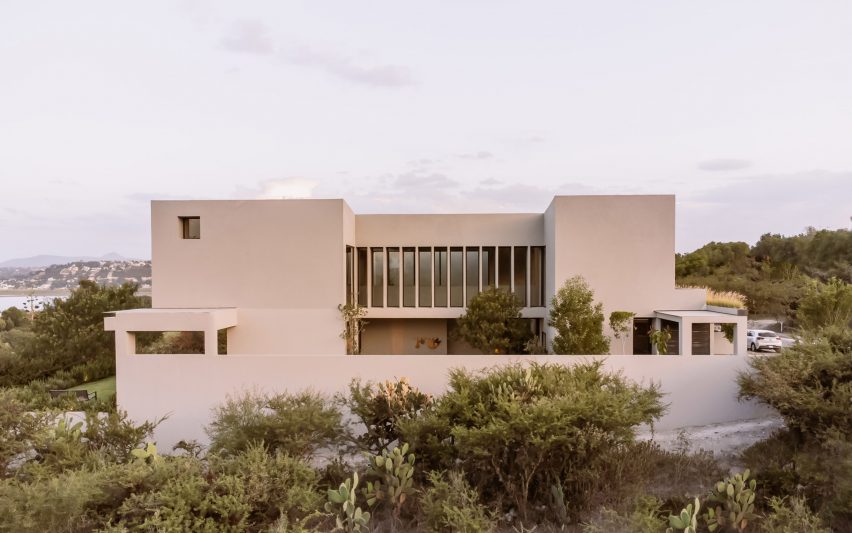
The shallow 455-square-metre, U-shaped house was arranged so that all of the recreational areas are along the perimeter and the house can be opened in four cardinal directions to bring in light, air and views of the surrounding golf course.
"The general inspiration was to create open spaces connected with nature and the environment from architectural elements in a material mixture with Mexican craftsmanship," the studio told Dezeen.
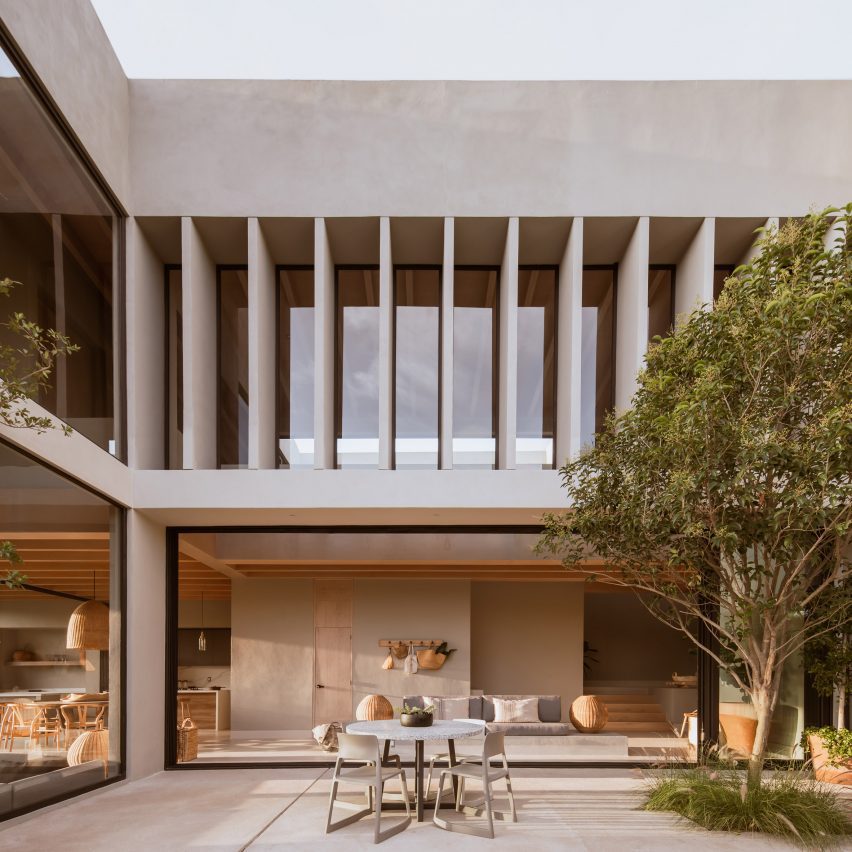
The two-storey home was constructed with light-coloured, flat-finished concrete – referencing the mud and earth of the site – with large warm wooden beams that run across the ceilings of each space and draw attention to the scale of several double-height spaces.
Selected for durability and low maintenance, the home's material palette also includes sand-coloured chukum and stone cladding.
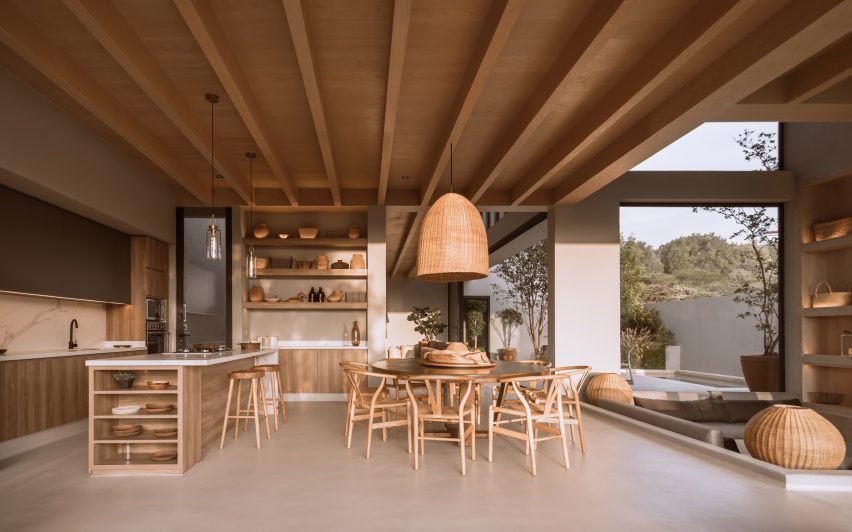
Floor-to-ceiling windows and sliding glass walls are framed in thin black metal, which reappears in the delicate metal railings of the bedroom balconies.
Within the warm, neutral interior, the living space is sunken, allowing residents to sit on benches the level of the floor, while surrounded by windows.
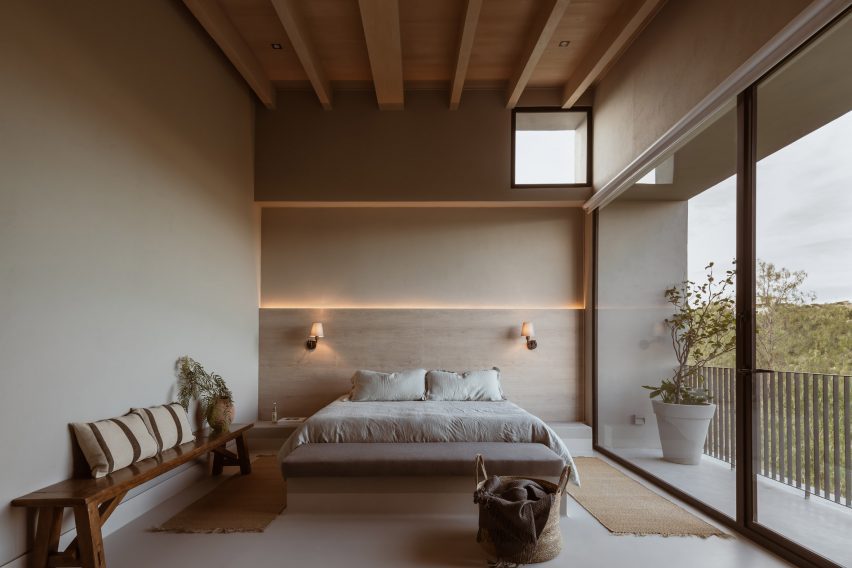
A continuation of ceiling beams past the sliding glass walls of the kitchen dissolves the transition between the interior and exterior.
Some of the terraces are open to the outdoors, while the expansive northern outdoor area is walled for privacy.
The open eastern terrace was positioned to act as a thermal buffer to mitigate temperature inside the house and, combined with the parallel layout for cross ventilation, negates the need for mechanical air conditioning and heating.
A solar-heated rectangular pool in the north yard is flanked by a patio space. The ventilated living spaces on the ground level feature double-height ceilings in certain areas that are topped by clerestory windows, some of which have concrete louvres.
The second level steps back from the perimeter of the house and the centre of the plan is recessed here, forming a deeper U-shape.
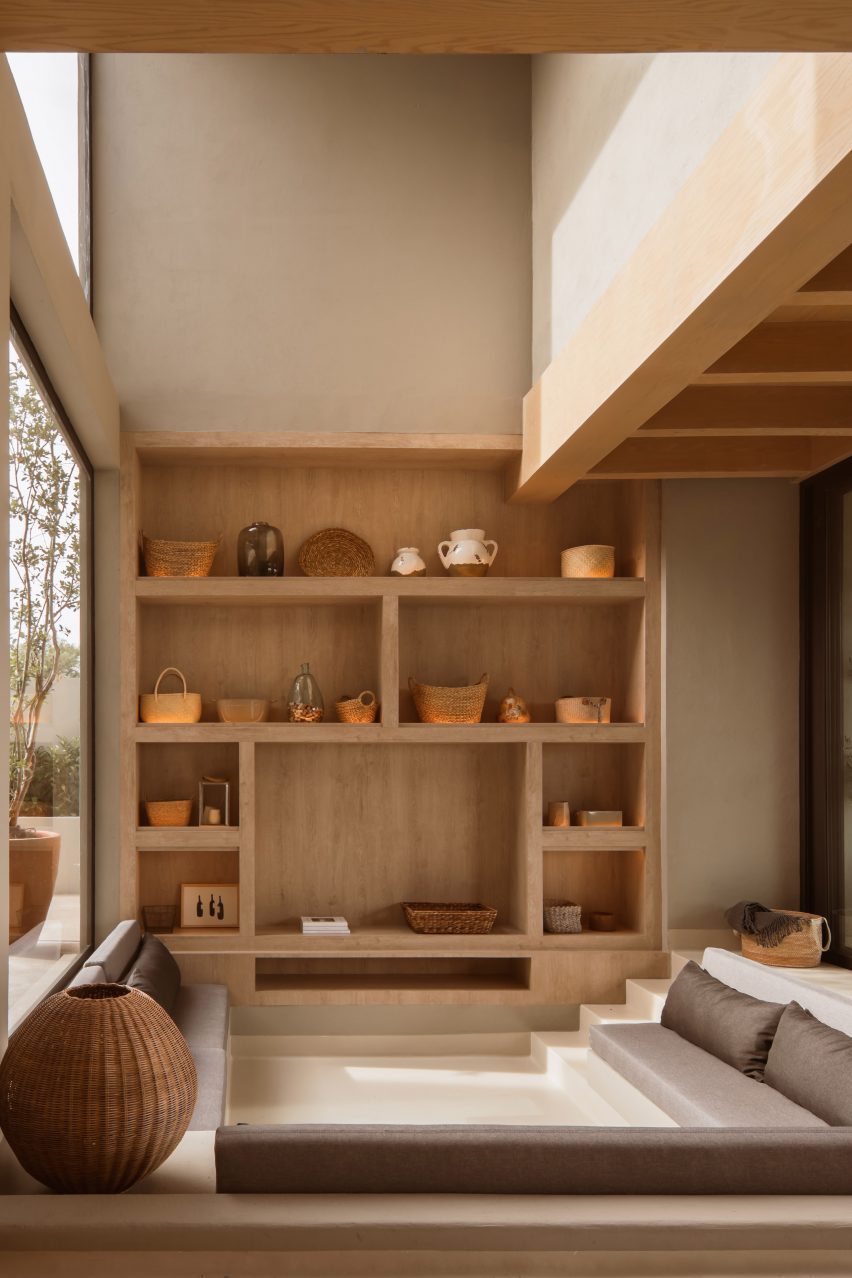
Inside, a corridor contains a bridge between the primary suite and the secondary suite, running parallel with the louvred window. The beams of the sloping roof are exposed in the bedrooms, which have private terraces and built-in furniture.
Planted roofs top either end of the first level while solar panels are arranged on top of the shed-like second level, located next to the skylights that illuminate the double-height staircase.
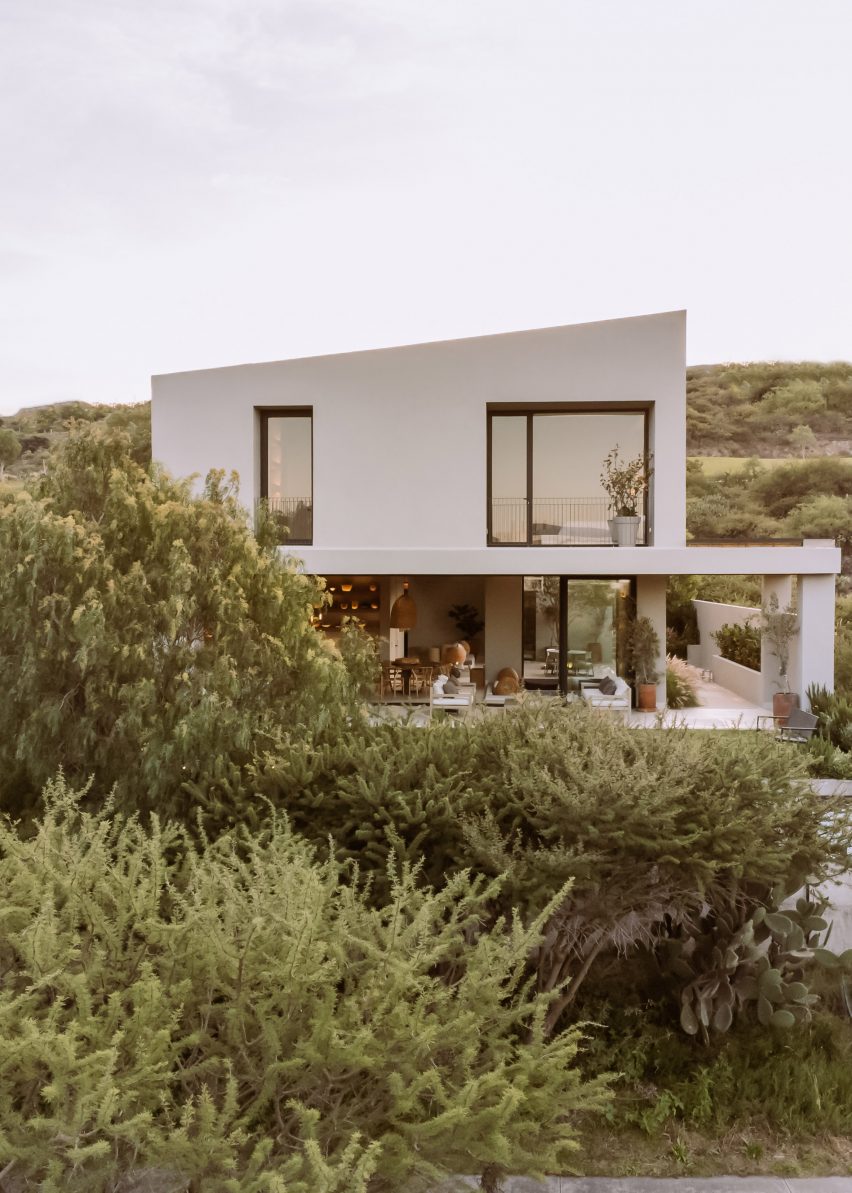
The team aimed to "make a restful home that fulfils the function of generating peace through quality spaces and natural textures, colors, lots of light and fresh air".
Nearby, architecture studio PPAA also used a concrete and wood mass in a Mexico City home, with a board-formed finish that provides texture and detail to the facade.
Other projects that include chukum include a museum outside of Mérida by Estudio MMX.
The photography is by Ariadna Polo.
Project credits:
Architect: Romero de la Mora Architecture and Development
Project team: Rodrigo Romero de la Mora, Edgar Fonsseca, Alan Islas